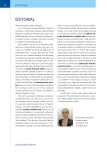LAPAROSCOPIC RADICAL CYSTECTOMY – VIDEO 2015
Authors:
Michal Balík; Josef Košina; Jiří Špaček; Slavomír Vachata; Jaroslav Pacovský; Petr Hušek; Lukáš Holub; Miloš Broďák
Authors‘ workplace:
Lékařská fakulta Univerzity Karlovy v Hradci Králové
; Urologická klinika Fakultní nemocnice v Hradci Králové
Published in:
Ces Urol 2016; 20(2): 100-103
Category:
Video
Overview
Goals:
Minimally invasive approaches in oncological surgery are associated with less morbidity without compromising oncological results. We present our video from a laparoscopic radical cystectomy in a male patient.
Methods:
We start procedure in Trendelenburg position creating capnoperitoneum by Veres needle through small incision above umbilicus. We use umbilical camera port, 1 x 10 mm and 3 x 5 mm working ports around the line between umbilicus and iliac spine. We start with pelvic lymph node dissection on both sides, removing lipo-lymphatic tissue around common iliac vessels and from obturator fossa. We identify psoas muscle, genitofemoral nerve, common iliac vessels, obturator nerve and ureter. After deliberation of lateral aspect of bladder and prostate (through endopelvic fascia) we dissect ureter as far as possible and after clipping we sent the specimen for frozen section. Next step is prophylactic appendectomy. We continue dissection of bladder and prostate with seminal vesicles from rectum. Isolated pedicles of bladder and prostate are interrupted by diathermy and clips. Specimen is removed by dissection in prevesical fat and cutting puboprostatic ligaments and urethra just below the apex of prostate. Final step after suturing urethra is transposition of left ureter through sigmoid mesocolon to the right side. If frozen section is negative, we continue with creation of urinary diversion through 5–7 cm long minilaparotomy around the umbilicus.
Results:
From April 2014 to September 2015 we performed 13 laparoscopic radical cystectomies in male patients for invasive or endoscopically untreatable urothelial bladder carcinoma. Mean age was 64 (52–74) years, body mass index 27.7 (21.7–40.3). We created 12 ileal conduits and 1 continent orthotopic diversion. Mean operation time was 359 minutes (250–420). Mean blood loss was 268 ml (100–1000). No blood transfusion was administered. No prolonged lymphatic secretion from drains or wounds was observed. Average length of hospitalization was 15.6 days (11–30). One patient died 7 months after procedure because of renal failure with no harm on higher urinary tract. One patient died 9 months after procedure because of recurrence of urothelial carcinoma. Most serious complication within 90 days after procedure was distal ureter necrosis managed by reoperation (Dindo-Clavien IIIb). We observed no paralytic ileus or secondary wound healing. In this video we present the procedure in a 70 year old male patient with body mass index 26,9. Initial histology findings from transurethral biopsy made in November 2014 were invasive urothelial carcinoma pT2 grade 3 (high grade). There were no distant metastases observed. The patient underwent 4 cycles of neoadjuvant chemotherapy (doxorubicine + cisplatine). Procedure was performed in May 2015 lasting 322 minutes, blood loss was 150 ml, hospital stay was 13 days, there were no complications observed. Final histology showed invasive urothelial carcinoma pT2b grade 3 (high grade), 10 lymphatic nodes without metastases and prostate without malignancy. Patient lived 6 month after procedure without recurrence of carcinoma, with normal renal function and normal ultrasound findings of upper urinary tract.
Conclusion:
Laparoscopic radical cystectomy is a safe method of treatment for invasive urothelial bladder cancer.
Key words:
Laparoscopic radical cystectomy, extracorporeal ileal conduit, extensive pelvic lymphadenectomy.
Sources
1. Witjes JA, Compérat E, Cowan NC, et al. EAU guidelines on muscle-invasive and metastatic bladder cancer: summary of the 2013 guidelines. Eur Urol. 2014; 65 : 778–792.
2. Khan MS, Challacombe B, Elhage O, et al. A dual-centre, cohort comparison of open, laparoscopic and robotic-assisted radical cystectomy. Int J Clin Pract. 2012; 66 : 656–662.
3. Basillote JB, Abdelshehid C, Ahlering TE, Shanberg AM. Laparoscopic assisted radical cystectomy with ileal neobladder: a comparison with the open approach. J Urol 2004; 172 : 489–493.
4. Haber GP, Crouzet S, Gill IS. Laparoscopic and robotic assisted radical cystectomy for bladder cancer: a critical analysis. Eur Urol 2008; 54 : 54–62.
5. Hora M, Eret V, Ürge T, et al. Role laparoskopie v urologii. Ces Urol 2011; 15 : 93–100.
Labels
Paediatric urologist Nephrology UrologyArticle was published in
Czech Urology

2016 Issue 2
Most read in this issue
- THE CONSEQUENCES OF PENILE SUBCUTANEOUS APPLICATIONS OF THE FOREIGN MATERIALS
- NEPHROBLASTOMA – CURRENT EVALUATION AND TREATMENT
- BLACK ADENOMA OF THE ADRENAL GLAND
- KEY UROLOGICAL SURGICAL PROCEDURES IN THE CZECH REPUBLIC IN PERIOD 2009–2014
